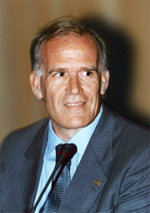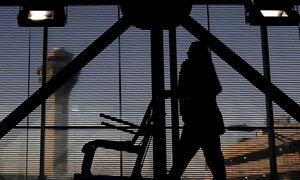실업·범죄율 높고 불법이민자 많아
캘리포니아주의 부흥에 관한 최근의 찬사는 사실일까. 주지사 제리 브라운이 두 자릿수 실업률과 260억달러의 예산적자 및 누적부채 350억달러를 낮추었다고 롤링스톤 잡지가 얼마 전에 보도했으나 불행히도 캘리포니아는 여전히 위기 상황을 벗어나지 못했다.
실업률은 7월에 8.7%로 다시 높아졌다. 이는 전국 평균 7.3%보다 현저히 높다. 민주당이 지배하는 주 의회가 의무적인 임금 하한선을 2년 정도 후에 9.25달러로 높이는 법안을 추진하고 있는 가운데 이런 높은 실업률은 좋지 않은 징조다.
누적부채는 350억달러가 아니다. 주 예산위기 실무 위원회가 1월에 발표한 보고서에 따르면 캘리포니아주의 공공부채는 최소 1670억달러 내지 3350억달러에 달한다.
 |
| 빅터 데이비스 핸슨 美 후버연구소 역사학자 |
캘리포니아가 재정위기에 빠진 당초 원인을 보자. 세계의 식량 가격이 폭등하고 있다. 캘리포니아는 세계에서 가장 우수한 농토, 기후, 농부를 보유하고 있다. 실리콘밸리에는 애플, 구글, 인텔, 페이스북이 본사를 두고 있다. 그밖에 미국 최대 기업들 가운데 속하는 웰스파고, 셰브론, 휼렛패커드, 세이프웨이도 캘리포니아에 있다.
할리우드의 영화산업, 디즈니랜드와 요세미티의 관광산업, 나파의 포도주산업도 보유한 캘리포니아에는 천연가스와 원유도 엄청난 분량이 매장되어 있기 때문에 스위스보다 더 번영할 수 있는 조건을 갖추고 있다. 캘리포니아의 5대 대학교인 칼텍, 스탠퍼드, UC 버클리, USC는 세계 20대 명문대학교에 포함된다.
그러나 하나님과 조상이 준 이런 유산을 캘리포니아는 탕진하고 있다. 풍력 및 태양력 발전산업에 거액을 투자했으나 캘리포니아의 전기요금은 미국에서 가장 높은 축에 속한다.
이로 인한 비용부담의 대부분은, 환경보호를 외치는 해안 지방의 부촌에 사는 엘리트들이 지는 것이 아니라 더 춥고 더 더운 내륙 지대에 밀집한 빈곤층 및 중산층이 진다. 이런 지역 주민들이 여름 혹서기에 에어컨을 계속 켜는 것은 먼 과거의 꿈일 뿐이다.
세금은 가장 높으나 행정 서비스는 밑바닥을 기는 현실 또한 캘리포니아가 안고 있는 역설이다. 이는 전국에서 최하위를 기록하고 있는 공립학교 학생들의 학력에 반영되고 있다.
지난 20년 동안 중상류층 인구 340만명이 캘리포니아를 떠나 세금이 낮거나 없는 주로 이주했다. 대신 캘리포니아주에는 불법이민자들이 가장 많다.
캘리포니아주의 회복 전략은 무엇일까. 세금 인상과 규제 및 정부 확장이다. 주 정부 관리들은 풍부한 유산, 해안문화, 자연미관, 기후가 기술혁신 및 인상된 세금 징수를 보장할 것으로 믿는다. 뉴포트나 팰로앨토 같은 곳의 높은 생활비는 안전의 대가로 생각될 수도 있으나 이런 지역도 범죄 걱정이 없는 것은 아니다.
캘리포니아는 과거의 영광을 되찾을까 디트로이트의 전철을 밟을까. 둘 다 가능하다.
환경보호주의자들, 베이에어리어의 동성애자들, 진보적인 도시 엘리트 계층, 첨단 닷컴 근로자들은 버클리와 샌디에이고 등 고급 주거 지역을 가까운 장래에 떠나지 않을 것이다.
그러나 로스앤젤레스 분지 등 내륙에 사는 중산층은 생활고의 태풍을 각오해야 할 것이다. 그들은 치솟는 세금, 높은 실업률, 불법이민의 비싼 대가, 증가하는 범죄, 높은 물가, 주택 경기 침체, 수준 이하의 공립학교, 상태가 불량한 도로를 견딜 수 있는 경제력이 없다.
간단히 말해서 캘리포니아의 해안지대는 아직 독일과 닮았지만 내륙의 대부분 지역은 그리스로 변해가고 있다.
빅터 데이비스 핸슨 美 후버연구소 역사학자
워싱턴타임스·정리=오성환 외신전문위원
One California ? or two?
By Victor Davis Hanson
The middle class is leaving the state to the rich and the poor
Are the recent raves about a new California renaissance true?
Rolling Stone magazine just gushed that California Gov. Jerry Brown has brought the state back from the brink of “double-digit unemployment, a $26 billion deficit and an accumulated ‘wall of debt’ topping $35 billion.”
Unfortunately, California still faces existential crises.
The unemployment rate just went back up in July to 8.7 percent. That is significantly higher than the current national average of 7.3 percent. Such a high rate of joblessness is a bad omen when the Democrat-controlled state Legislature is pushing for the mandatory minimum wage to reach $9.25 in a little more than two years.
The “wall of debt” is not $35 billion. According to the State Budget Crisis Task Force report that was issued in January, California debt ranges from a minimum of $167 billion to a staggering $335 billion.
To close the budget deficit, Mr. Brown cut expenses, but he also just raised already high taxes on incomes, sales and gas to the nation’s top levels. We won’t know the full effect of those costs on either businesses or the ongoing exodus of the more affluent for months to come.
Yet why was California ever in a fiscal crisis at all?
World food prices are soaring. California has the best soils, weather and farmers in the world. Silicon Valley hosts Apple, Google, Intel and Facebook. The state hosts some of the nation’s largest corporations, such as Wells Fargo, Chevron, Hewlett-Packard and Safeway.
The movie industry in Hollywood, tourism from Disneyland to Yosemite, the Napa wine industry, and vast deposits of gas and oil should make California more prosperous than Switzerland. Its top five universities ? Caltech, Stanford, UC Berkeley, UCLA and USC ? usually rate among the top 20 worldwide.
Yet despite what God and man in the past have given the state, California has often squandered its inheritance. For all its costly investments in wind and solar power, California electricity rates are the steepest in the nation.
The tab falls most heavily not on the green elites of the affluent coastal communities, but on the poor and middle classes concentrated in the hotter and colder interior. For many in Fresno or Bakersfield, keeping on the air conditioning when August temperatures hit 100 is a fantasy from a bygone age.
Californians pay among the highest gas prices in the country. Again, those astronomical costs seem surreal, given that the state sits atop huge untapped deposits of gas and oil.
The California paradox of having among the highest taxes and among the worst services is also echoed in state-by-state rankings of public-school test scores. California continues to place near the bottom.
Do those sky-high California gas taxes translate into superb roads? Not yet, at least. Reason Foundation’s 20th annual highway report ranked California roads 47th in the nation.
In the past 20 years, 3.4 million middle- and upper-middle-class Californians have fled paradise for low- or no-tax states. In contrast, the state currently has had the largest influx of residents who immigrated illegally. Although exact numbers are impossible to obtain, estimates suggest that about 3 million Latin American nationals are residing in California. Many are hardworking immigrants, but most arrive illegally, don’t speak English, and don’t have money or a high school education.
Ensuring foreign nationals minimum parity with U.S. citizens requires huge state inputs in education, law enforcement and health services. The 2012 census listed California as having the highest poverty level (23.5 percent) of any state in the union. A state with roughly 12 percent of the U.S. population is now home to 33 percent of the nation’s welfare recipients.
What, then, is the state’s strategy for recovery? More taxes, regulations and government.
Apparently, officials in Sacramento assume that the state’s rich inheritance, coastal culture, and natural beauty and climate will ensure that most Californians stay put, keep innovating and pony up far more in sales, income and gas taxes.
The exorbitant cost of living will simply be the shakedown price of being a resident of hip Newport Beach or Palo Alto ? places thought to be safe, if not immune, from the turmoil growing elsewhere in the state.
So will California recover its past glory ? or go the way of Detroit?
It may do both.
Coastal greens, progressive Bay Area homosexuals, liberal urban elites and hip dot-com workers will probably not soon flee the temperate, scenic corridor from Berkeley to San Diego. For at least a while longer, they will be wealthy and confident enough to afford the living costs that high taxes and a myriad of regulations ensure.
Yet for the strapped middle classes in the interior of the Los Angeles basin and the Central Valley, there is a perfect storm raging. They can ill afford the soaring taxes, high unemployment, costly illegal immigration, escalating crime rates, substandard roads, record power and gas prices, underwater home values and dismal schools.
In short, the California coastal corridor still resembles Germany, while much of the interior is becoming Greece.
By Victor Davis Hanson
The middle class is leaving the state to the rich and the poor
Are the recent raves about a new California renaissance true?
Rolling Stone magazine just gushed that California Gov. Jerry Brown has brought the state back from the brink of “double-digit unemployment, a $26 billion deficit and an accumulated ‘wall of debt’ topping $35 billion.”
Unfortunately, California still faces existential crises.
The unemployment rate just went back up in July to 8.7 percent. That is significantly higher than the current national average of 7.3 percent. Such a high rate of joblessness is a bad omen when the Democrat-controlled state Legislature is pushing for the mandatory minimum wage to reach $9.25 in a little more than two years.
The “wall of debt” is not $35 billion. According to the State Budget Crisis Task Force report that was issued in January, California debt ranges from a minimum of $167 billion to a staggering $335 billion.
To close the budget deficit, Mr. Brown cut expenses, but he also just raised already high taxes on incomes, sales and gas to the nation’s top levels. We won’t know the full effect of those costs on either businesses or the ongoing exodus of the more affluent for months to come.
Yet why was California ever in a fiscal crisis at all?
World food prices are soaring. California has the best soils, weather and farmers in the world. Silicon Valley hosts Apple, Google, Intel and Facebook. The state hosts some of the nation’s largest corporations, such as Wells Fargo, Chevron, Hewlett-Packard and Safeway.
The movie industry in Hollywood, tourism from Disneyland to Yosemite, the Napa wine industry, and vast deposits of gas and oil should make California more prosperous than Switzerland. Its top five universities ? Caltech, Stanford, UC Berkeley, UCLA and USC ? usually rate among the top 20 worldwide.
Yet despite what God and man in the past have given the state, California has often squandered its inheritance. For all its costly investments in wind and solar power, California electricity rates are the steepest in the nation.
The tab falls most heavily not on the green elites of the affluent coastal communities, but on the poor and middle classes concentrated in the hotter and colder interior. For many in Fresno or Bakersfield, keeping on the air conditioning when August temperatures hit 100 is a fantasy from a bygone age.
Californians pay among the highest gas prices in the country. Again, those astronomical costs seem surreal, given that the state sits atop huge untapped deposits of gas and oil.
The California paradox of having among the highest taxes and among the worst services is also echoed in state-by-state rankings of public-school test scores. California continues to place near the bottom.
Do those sky-high California gas taxes translate into superb roads? Not yet, at least. Reason Foundation’s 20th annual highway report ranked California roads 47th in the nation.
In the past 20 years, 3.4 million middle- and upper-middle-class Californians have fled paradise for low- or no-tax states. In contrast, the state currently has had the largest influx of residents who immigrated illegally. Although exact numbers are impossible to obtain, estimates suggest that about 3 million Latin American nationals are residing in California. Many are hardworking immigrants, but most arrive illegally, don’t speak English, and don’t have money or a high school education.
Ensuring foreign nationals minimum parity with U.S. citizens requires huge state inputs in education, law enforcement and health services. The 2012 census listed California as having the highest poverty level (23.5 percent) of any state in the union. A state with roughly 12 percent of the U.S. population is now home to 33 percent of the nation’s welfare recipients.
What, then, is the state’s strategy for recovery? More taxes, regulations and government.
Apparently, officials in Sacramento assume that the state’s rich inheritance, coastal culture, and natural beauty and climate will ensure that most Californians stay put, keep innovating and pony up far more in sales, income and gas taxes.
The exorbitant cost of living will simply be the shakedown price of being a resident of hip Newport Beach or Palo Alto ? places thought to be safe, if not immune, from the turmoil growing elsewhere in the state.
So will California recover its past glory ? or go the way of Detroit?
It may do both.
Coastal greens, progressive Bay Area homosexuals, liberal urban elites and hip dot-com workers will probably not soon flee the temperate, scenic corridor from Berkeley to San Diego. For at least a while longer, they will be wealthy and confident enough to afford the living costs that high taxes and a myriad of regulations ensure.
Yet for the strapped middle classes in the interior of the Los Angeles basin and the Central Valley, there is a perfect storm raging. They can ill afford the soaring taxes, high unemployment, costly illegal immigration, escalating crime rates, substandard roads, record power and gas prices, underwater home values and dismal schools.
In short, the California coastal corridor still resembles Germany, while much of the interior is becoming Greece.
[ⓒ 세계일보 & Segye.com, 무단전재 및 재배포 금지]
![[설왕설래] “내 전임자는 바쁘다”](http://img.segye.com/content/image/2024/04/19/128/20240419515315.jpg
)
![[기자가만난세상] ‘세월호 증인’ 팽목항 기억되길](http://img.segye.com/content/image/2024/04/19/128/20240419515247.jpg
)
![[조경란의얇은소설] 아버지가 지금 있는 곳](http://img.segye.com/content/image/2021/10/29/128/20211029514141.jpg
)
![[박일호의미술여행] 싸움은 이제 그만](http://img.segye.com/content/image/2024/04/19/128/20240419515306.jpg
)








